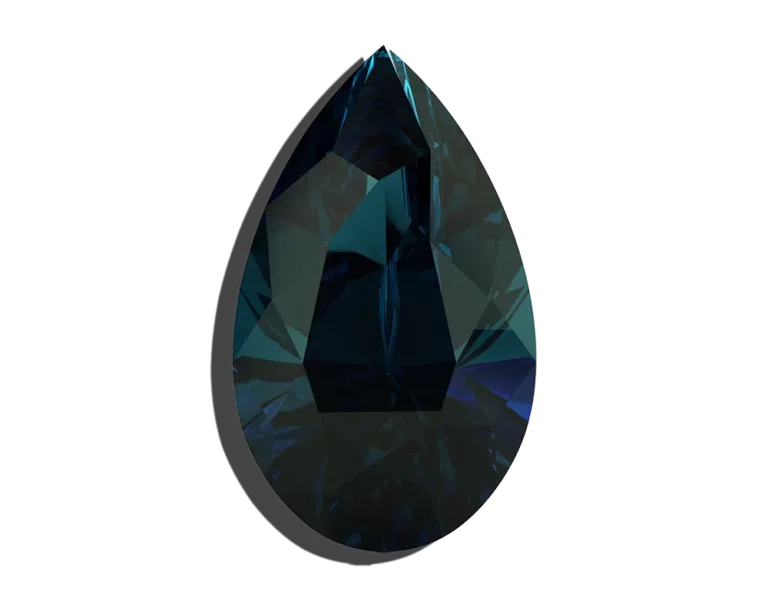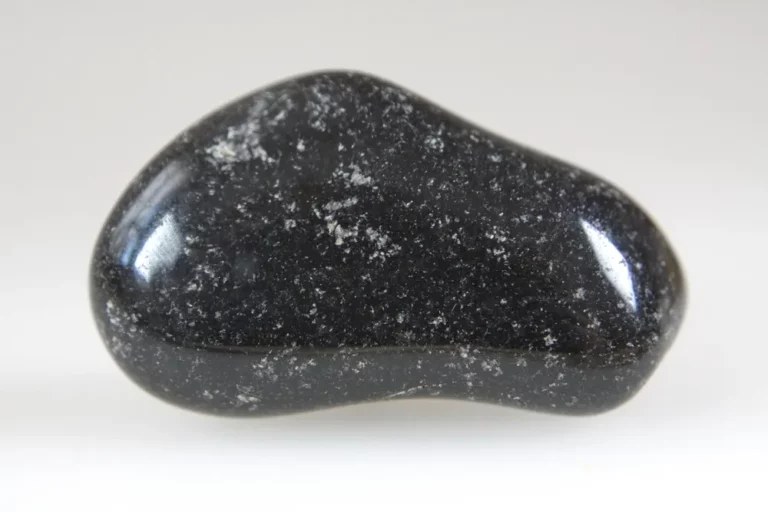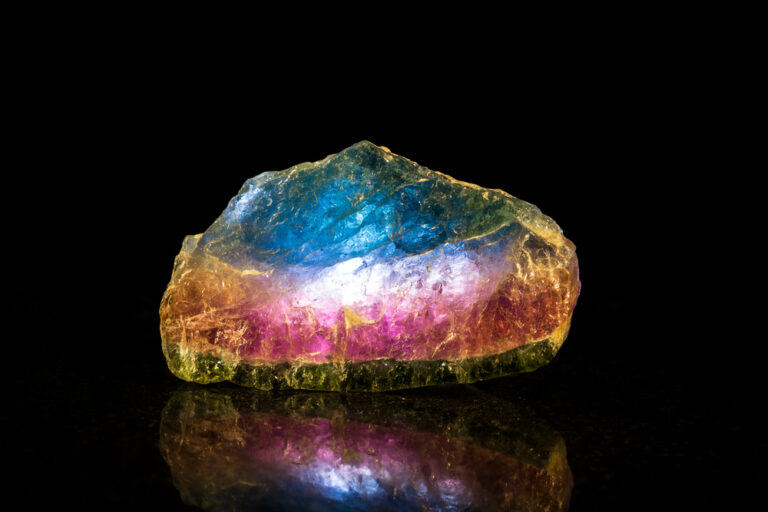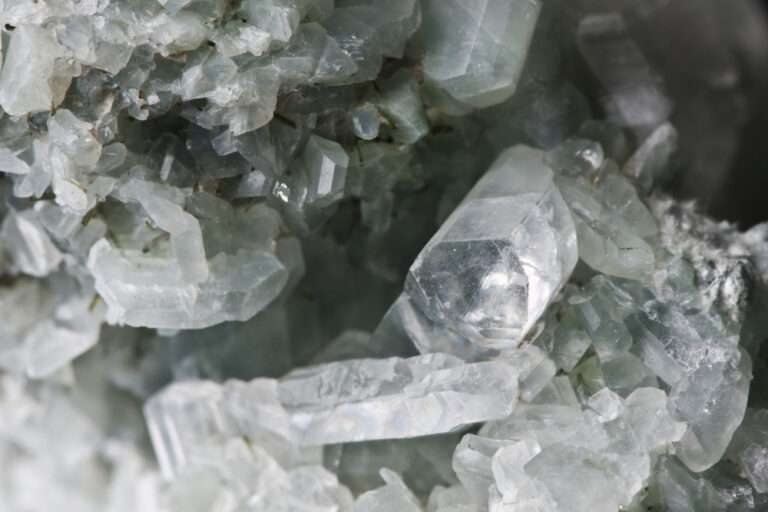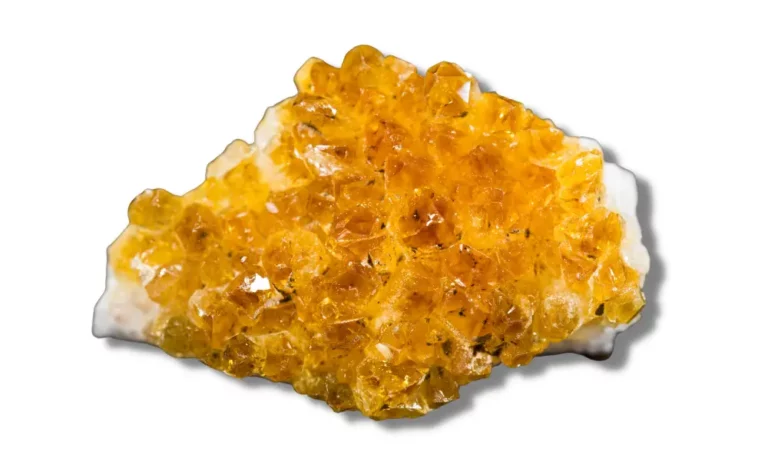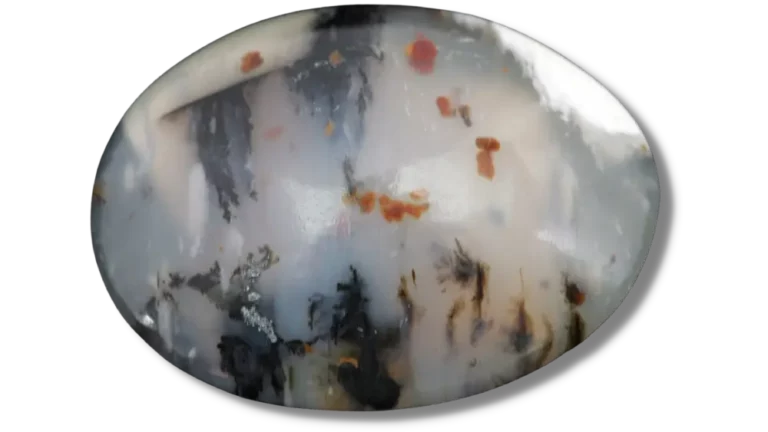Persian Turquoise: Properties, Benefits & Meanings

Persian Turquoise Overview
Persian Turquoise is a beautiful and unique semi-precious stone prized for centuries for its vibrant blue color and intricate patterns. It is known for its high quality and striking appearance. It is mined in Iran, a country with a rich history and culture that has long been associated with turquoise.
This gemstone has been used in a variety of ways, including in jewelry, decorative objects, and even as a symbol of wealth and status. It is highly sought after by collectors and those looking for exceptional pieces of jewelry. The article explores the meaning, properties, and uses of the Persian Turquoise stone.
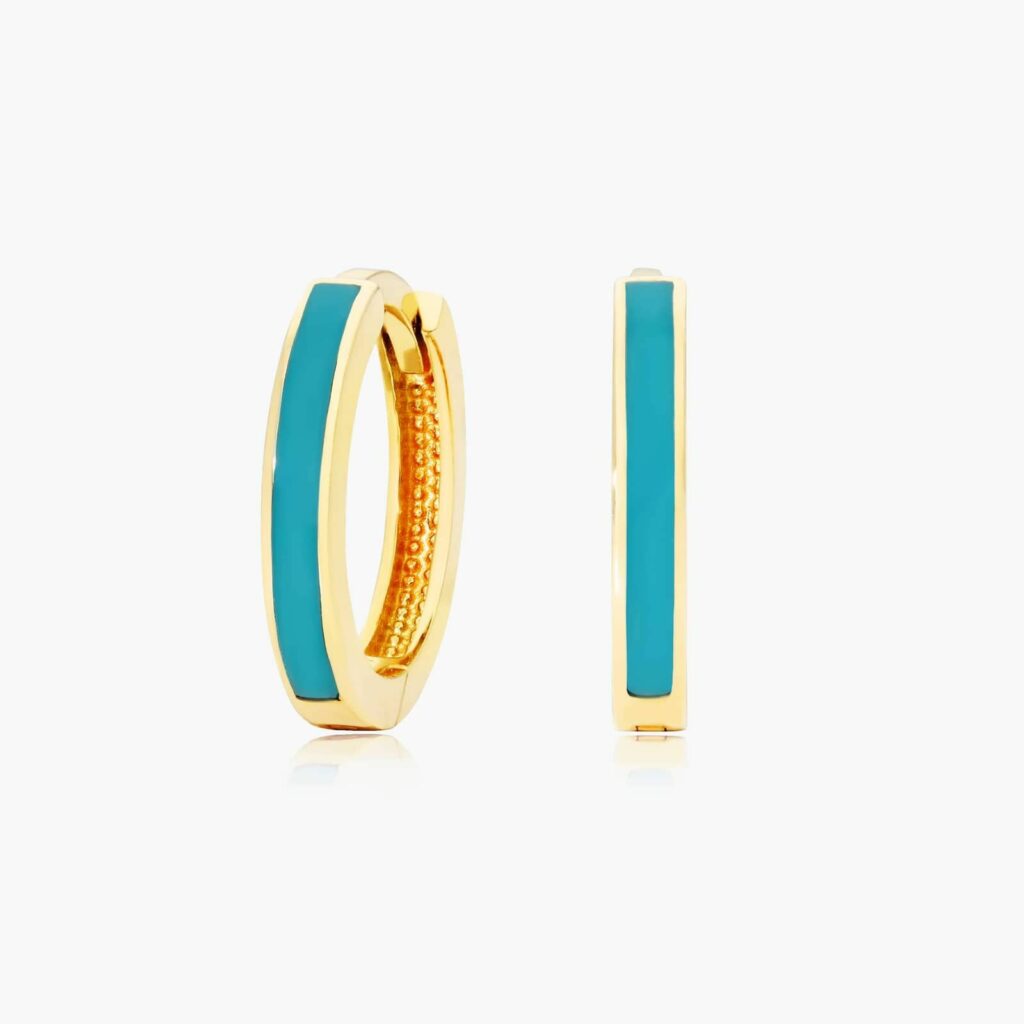
James Allen’s 14K Yellow Gold Turquoise Huggie Hoop Earrings: Vibrant elegance.
What Is Persian Turquoise?
Persian turquoise is a type of turquoise that is highly prized for its deep, rich blue color. It is often mined in Iran, hence the name “Persian turquoise.” It is used in jewelry making and other decorative arts and is considered to be one of the highest-quality types of turquoise.
The deep blue color results from the presence of copper in the mineral, which gives it it’s unique coloring. It is thought to relate to the throat chakra and symbolizes nobility and intuition.
Where Can You Find Persian Turquoise?
Persian turquoise is typically mined in Iran, although it can also be found in other countries in the Middle East and Central Asia. Iran has an extensive list of Turquoise mines, and the country is known for having some of the highest-quality turquoise deposits in the world.
Blue turquoise is also used in jewelry making and other decorative arts and can be found in jewelry stores and other retailers specializing in gemstones and precious metals. It is also possible to find Persian turquoise for sale online, although it is important to carefully research the seller and the stone’s quality before making a purchase.
Persian Turquoise Appearance
As mentioned earlier, Persian turquoise is known for its deep, rich blue color, which is caused by the presence of copper in the mineral. The color can range from a pale sky blue to a deep, almost navy blue, depending on the amount of copper present.
Some examples of Persian turquoise may also have veins or mottling in shades of green, brown, or black, which is caused by the presence of other minerals in the stone.
The texture of Persian turquoise can be smooth and even, or it may have a more rough and bumpy appearance, depending on how it was formed and the conditions it was subjected to over time. Overall, Persian turquoise is a beautiful and unique stone with a rich history and cultural significance.
Physical Properties
| Mineral Group | Turquoise |
| Formula | CuAl6(PO4)4(OH)8 · 4H2O |
| Color | Bright Blue |
| Hardness (Mohs scale) | 5 – 6 |
| Refractive Index | 1.61 – 1.65 |
| Fracture | Uneven, Sub-Conchoidal |
| Luster | Sub-Vitreous, Resinous, Waxy |
| Specific Gravity | 2.6 – 2.8 |
| Transparency | Transparent, Translucent |

James Allen’s 14K Yellow Gold Turquoise Enamel Bar Necklace: Effortless elegance.
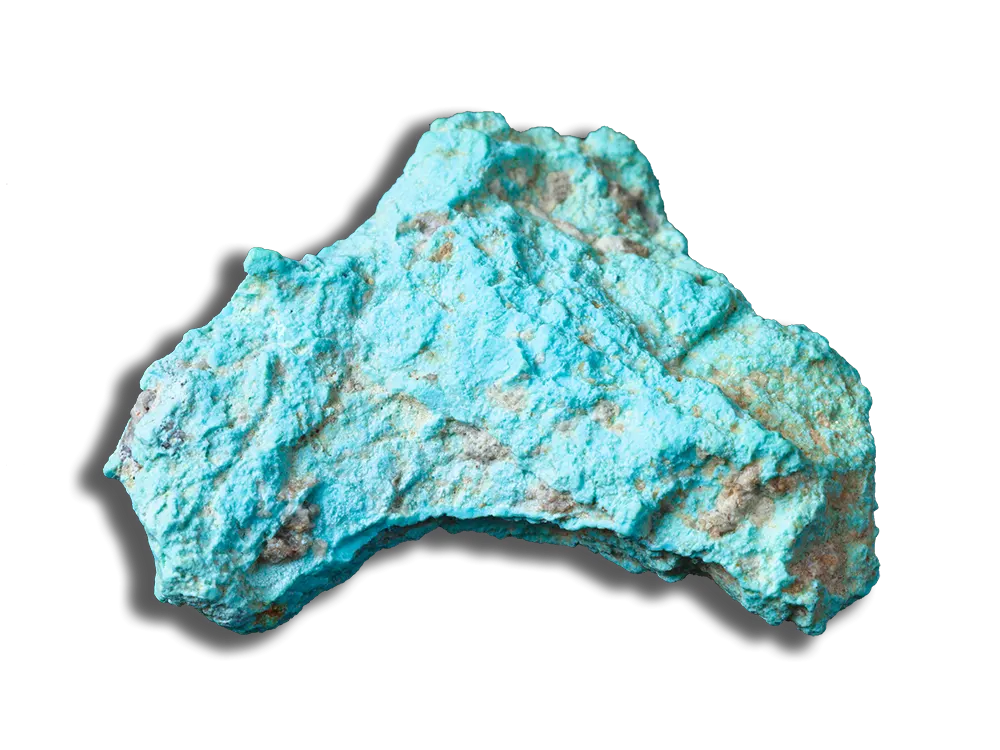
How To Tell If the Persian Turquoise Is Real?
There are a few ways to determine whether a turquoise piece is real.
- Color: One way is to look at the color of the stone. Natural turquoise is typically a deep, rich blue color and may have veins or mottling in shades of green, brown, or black. If the stone’s color is pale or washed out, or if it is a uniform blue color without any variations, it may not be real turquoise.
- Texture: Another way to tell if a piece of turquoise is real is to look at its texture. Real natural turquoise has a slightly bumpy or rough texture, whereas fake turquoise may be smoother and more even.
- Scratch Test: Finally, you can also try scratching the stone’s surface with a sharp object, such as a knife or glass. Natural turquoise is relatively soft and should scratch easily, whereas fake turquoise may be harder and more resistant to scratching.
- Acetone Test: If you are still unsure of whether your stone is fake or real, you can try the acetone test. Acetone is a solvent that dissolves organic materials, such as varnish and paint. If the stone loses color when dipped in an acetone solution, its not natural. Untreated Turquoise shouldn’t lose any color.
Persian Turquoise Cost and Value
Persian turquoise is considered to be a high-quality gemstone and can be quite valuable. The cost and value of Persian turquoise stones vary based on the quality and size of the stone and the rarity of the color.
The cost of a piece of Persian turquoise jewelry can range from a few hundred dollars to several thousand dollars, depending on different factors.
- Quality: The quality of the turquoise is a major factor in determining its price. Higher-quality stones tend to be more expensive due to their rarity and beauty.
- Size: Larger stones generally command a higher price than smaller stones due to their rarity and the greater amount of material used in their production.
- Color: The color of turquoise can vary widely, and some shades are more valuable than others. Darker, more vibrant shades of blue are generally considered more desirable and, therefore, more expensive.
- Cut: The cut of a turquoise stone can also affect its price. Stones that have been cut and polished to showcase their natural beauty and intricate patterns tend to be more expensive.
- Clarity: Turquoise stones with fewer inclusions or blemishes are generally more valuable.
- Carat weight: The weight of the stone, measured in carats, can also impact its price. Larger stones tend to be more expensive due to their rarity.
- Demand: The demand for turquoise can also affect its price. If there is high demand for the gemstone, prices may be driven up.
- Location of origin: Persian turquoise, in particular, is known for its high quality and is, therefore, more valuable than other types of turquoise. The location where the stone was mined can also affect its price.
- Certification: Certified turquoise stones, which have been appraised by a reputable organization, may be more expensive due to the added value of their certification.
Keep in mind that the value of a gemstone can be subjective, and what one person may consider a valuable piece of Persian turquoise may not be considered valuable by someone else.

Persian Turquoise Chakra Connection
Turquoise is said to have a strong connection to the throat chakra, which is associated with communication, self-expression, and creativity.
The deep blue color of Persian turquoise is thought to resonate with the energy of the throat chakra and can help to open and balance this energy center. When the throat chakra is balanced, it can help to improve communication, promote self-expression, and enhance creativity.
A Turquoise necklace can also help to reduce the feelings of fear and anxiety that can block the flow of energy in the throat chakra. Many people wear Persian turquoise jewelry or keep a piece of the finest turquoise near them to help balance their throat chakra and improve their communication skills.
Persian Turquoise Meaning And Uses
Turquoise has been prized for its beauty and unique color for thousands of years and has been used in various ways by different cultures worldwide.
- In many Native American cultures, turquoise is considered a sacred stone used in religious ceremonies and rituals.
- It is also used in traditional Native American jewelry making and is often given as a gift to symbolize friendship and good luck.
- In other cultures, turquoise is believed to have healing properties and is used in crystal healing practices to help promote physical and emotional well-being.
- Persian turquoise, in particular, is highly prized for its deep, rich blue color and is often used in decorative arts.
- It is also believed to have spiritual and healing properties and is used in various spiritual practices to help balance the chakras and promote overall well-being.
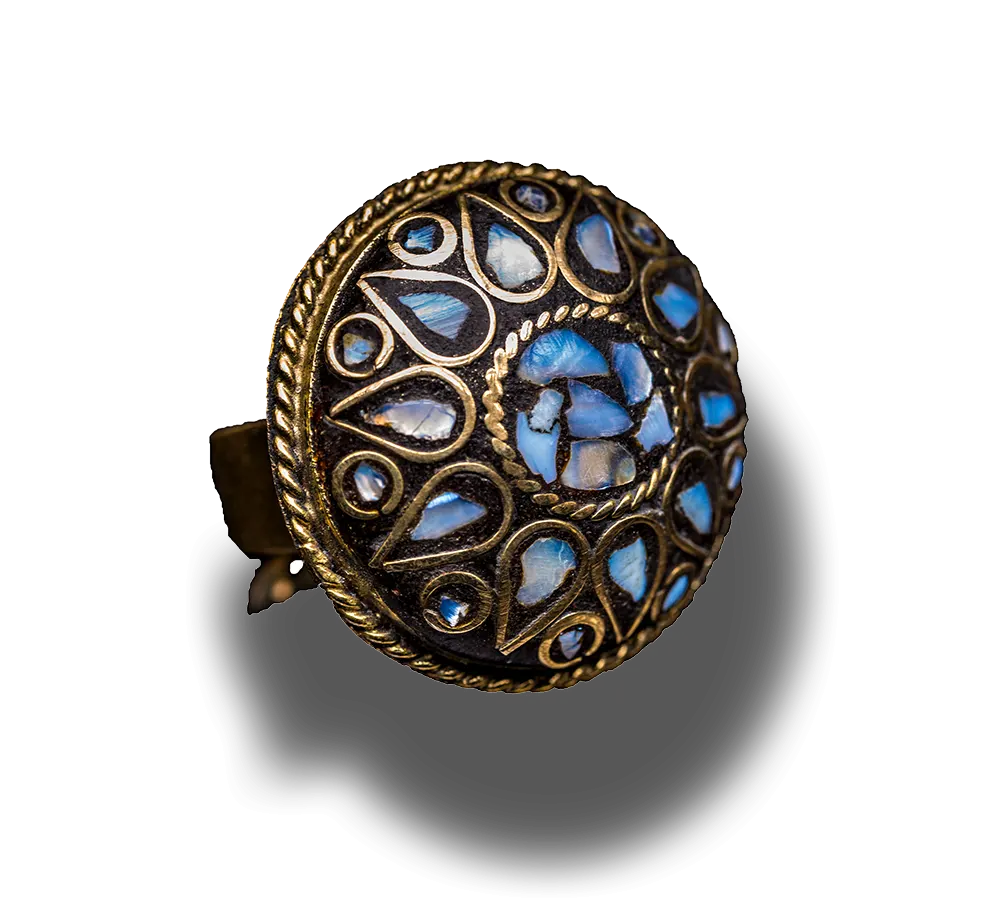
How To Clean Persian Turquoise Jewelry?
To clean Persian turquoise jewelry, follow these steps:
- Create a solution of warm water and mild dish soap in a small bowl.
- Dip a soft cloth or brush into the solution, and gently scrub the jewelry to remove any dirt or grime.
- Rinse the jewelry thoroughly with clean water to remove any soap residue.
- Dry the jewelry with a soft cloth, being careful not to rub it too hard, which could damage the stone.
- Allow the jewelry to air dry completely before wearing or storing it.
It is important to use gentle, non-abrasive cleaning methods when cleaning Persian turquoise jewelry, as the stone is delicate and can be easily damaged by harsh chemicals or abrasive materials. Avoid using abrasive cleaners or scrubbing the jewelry too hard, as this can cause the stone to crack or chip.
Also, rinse the jewelry thoroughly with clean water to remove any soap residue, and allow it to air dry completely before wearing or storing it.
Following these simple steps, you can keep your Persian turquoise jewelry clean and beautiful.
FAQ
Which Gemstones Go Best With Persian Turquoise?
There are many gemstones that pair well with Persian turquoise. Some gemstones that go well with Persian turquoise include:
1. Lapis lazuli: Lapis lazuli is a deep blue stone that complements the color of Persian turquoise. It is also believed to have spiritual and healing properties and is often used in crystal healing practices.
2. Moonstone: Moonstone is a milky white stone that has an iridescent sheen. It is thought to have calming and soothing properties and pairs well with the deep blue color of Persian turquoise.
3. Aquamarine: Aquamarine is a light blue stone that is associated with the element of water. It is believed to have calming and soothing properties and pairs well with the deep blue color of Persian turquoise.
In general, any gemstone that has a color that complements the deep blue of Persian turquoise will pair well with it. It is also important to consider the properties and energies of the different gemstones when selecting which ones to pair with Persian turquoise.
What Is Persian Turquoise Good For?
Persian turquoise is believed to have spiritual and healing properties and is used in crystal healing practices to help balance the chakras and promote overall well-being.
Persian turquoise is thought to have a strong connection to the throat chakra, which is associated with communication, self-expression, and creativity. It is also believed to have calming and soothing properties and is often used to help reduce feelings of fear and anxiety.
In addition to its spiritual and healing properties, Persian turquoise is also a beautiful and unique stone that adds a touch of elegance and sophistication to any piece of jewelry or decorative item.


